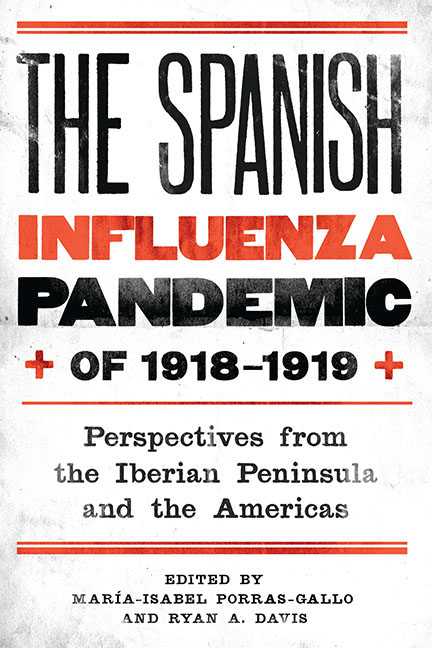 The Spanish Influenza Pandemic of 1918–1919
The Spanish Influenza Pandemic of 1918–1919 Book contents
- Frontmatter
- Dedication
- Contents
- Introduction: Emerging Perspectives of the Spanish Influenza Pandemic of 1918–19
- Part One Scientific Discourse: Now and Then
- Part Two Social Responses: Human and Institutional Actors
- Part Three Interpreting the Epidemic: Sociocultural Dynamics and Perspectives
- 9 A Tale of Two Spains: Narrating the Nation during the 1918–19 Influenza Epidemic
- 10 The Spanish Flu in Argentina: An Alarming Hostage
- 11 Epidemic Disease, Local Government, and Social Control: The Example of the City of Alicante, Spain
- 12 The Gendered Dimensions of Epidemic Disease: Influenza in Montreal, Canada, 1918–20
- 13 Remembering and Reconstructing: Fictions of the 1918–19 Influenza Pandemic
- Selected Bibliography
- List of Contributors
- Index
10 - The Spanish Flu in Argentina: An Alarming Hostage
from Part Three - Interpreting the Epidemic: Sociocultural Dynamics and Perspectives
Published online by Cambridge University Press: 14 March 2018
- Frontmatter
- Dedication
- Contents
- Introduction: Emerging Perspectives of the Spanish Influenza Pandemic of 1918–19
- Part One Scientific Discourse: Now and Then
- Part Two Social Responses: Human and Institutional Actors
- Part Three Interpreting the Epidemic: Sociocultural Dynamics and Perspectives
- 9 A Tale of Two Spains: Narrating the Nation during the 1918–19 Influenza Epidemic
- 10 The Spanish Flu in Argentina: An Alarming Hostage
- 11 Epidemic Disease, Local Government, and Social Control: The Example of the City of Alicante, Spain
- 12 The Gendered Dimensions of Epidemic Disease: Influenza in Montreal, Canada, 1918–20
- 13 Remembering and Reconstructing: Fictions of the 1918–19 Influenza Pandemic
- Selected Bibliography
- List of Contributors
- Index
Summary
After more than three decades of presidents affiliated with a closely knit aristocratic circle, in 1912 the Argentine Congress implemented more transparent electoral laws that allowed the Radical Party led by popular caudillo Hipólito Yrigoyen to seize political power in 1916. The leader of the Radical Party generally cultivated an austere and mysterious style, was rarely seen in public, handled a myriad of matters personally, and believed in old-fashioned ways. He and his cadres consistently ignored criticisms expressed by the press and the opposition. At a time in which the Argentine press vociferously demanded that the country abandon neutrality and join the Allied Powers, the Yrigoyen administration did not even flinch. In October 1918, however, the particulars of World War I in the Argentine press started to share its prominence with accounts of the flu epidemic in Spain.
Throughout October and early November the Argentine press would forge a series of narratives, first, in response to the spread of the flu in Spain and Argentina's neighboring countries and, second, in response to the reaction of Yrigoyen's administration in the face of the local development of the disease. As the spread of the flu in the beginning of October was negligible, the Argentine press began its coverage by jesting about the importance of the disease. When the flu started to take its toll in neighboring countries, however, the jokes receded, and the Argentine press started to suspect that the aparent minimal impact of the disease in Argentina owed its existence more to the lack of verifiable statistics than to pure and simple good luck. As the dearth of reliable information and germane measures on the government's part seemed to remain unchanged, the reaction began to mount in major newspapers and magazines. If the purpose of this course of action was to avoid public alarm, the press denounced the fallacy of following the trail of fear instead of assessing the true impact of the flu in the country. But when the government decided to undertake multiple measures, the press accused the Yrigoyen administration of fueling public alarm without having any reliable information at hand.
- Type
- Chapter
- Information
- The Spanish Influenza Pandemic of 1918–1919Perspectives from the Iberian Peninsula and the Americas, pp. 194 - 214Publisher: Boydell & BrewerPrint publication year: 2014
